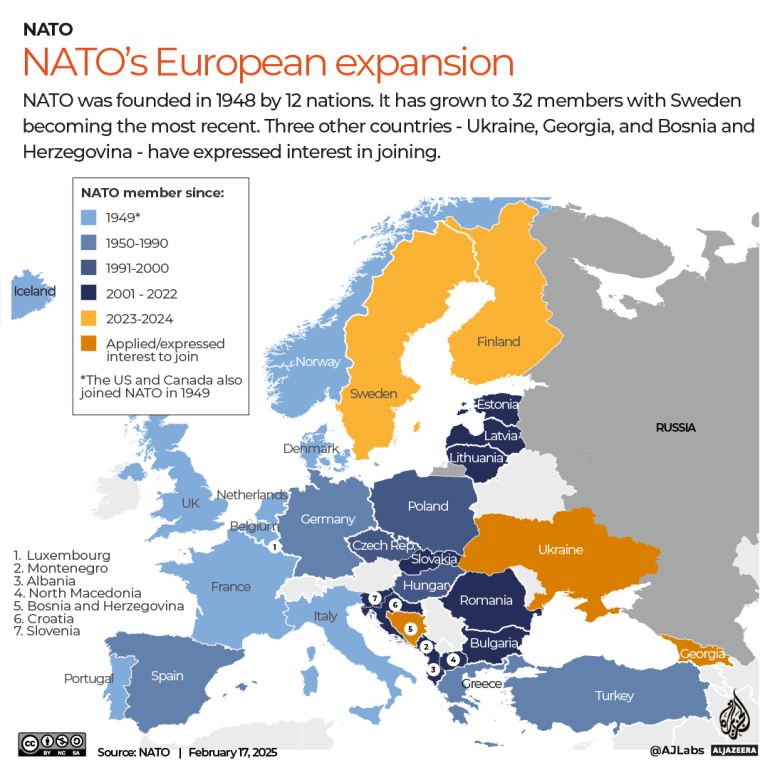EXPLAINER
The US, the largest military spender in the world, allocates $880bn to its defence – more than the next eight countries combined.
European leaders are meeting in Paris for an emergency summit to discuss how to respond to United States President Donald Trump’s decision to hold talks with Russia to end the Ukraine war without European involvement.
Monday’s meeting in the French capital follows the Munich Security Conference, which ended on Sunday, where US Vice President JD Vance reiterated Trump’s stance that Europe must increase its defence spending.
In January, Trump called on NATO’s European members to allocate 5 percent of their gross national products (GDPs) to defence. NATO Secretary-General Mark Rutte has also encouraged member states to increase their defence spending.
How much is global military spending?
Global military spending hit $2.44 trillion in 2023, or $306 per person, marking a 6.8 percent increase from the previous year, according to the Stockholm International Peace Research Institute (SIPRI). This was the largest year-on-year rise since 2009.
By comparison, in 2000, global military expenditures were $798bn, or $130 per capita – less than a third of the amount spent today.
Global military spending is the total money spent by countries on their military forces and related activities. This includes costs for soldiers, operations, weapons, equipment, research and military infrastructure.
Which countries spend the most on their militaries?
The US is the largest military spender in the world. In 2023, it paid out $880bn – more than the next eight countries combined, according to SIPRI.
China is the second highest spender with $309bn, followed by Russia at $126bn, India at $83bn and Saudi Arabia at $74bn.
The table below shows the total military spending for each country worldwide as well as their per capita spending and spending as a share of their GDPs and government budgets. Click on the columns to sort the table from highest to lowest.
Which nations spend the most on their militaries as a share of GDP?
Due to its ongoing war with Russia, Ukraine allocated $62bn to its military in 2023, the highest share of GDP at 36.7 percent.
Lebanon ranked second, spending 8.9 percent of its GDP, followed by Algeria at 8.2 percent, Saudi Arabia at 7.1 percent and South Sudan at 6.3 percent.
How much does each NATO member spend?
NATO, established in 1949 by 12 founding member states, is the world’s most powerful military alliance. Its original purpose was to limit Soviet expansion and promote political unity in Europe.
Over the past 75 years, its membership has grown to 32 members with Finland and Sweden becoming the latest countries to join in 2023 and 2024, respectively.

In 2006, the alliance’s defence ministers agreed to commit a minimum of 2 percent of their GDPs to defence spending to ensure the military readiness of the alliance.
Currently, two-thirds of its members (23 of 32) have fulfilled this commitment, raising the money spent on defence by all NATO members to $1.47 trillion in 2024. This is up from just 10 countries meeting the 2 percent guideline in 2023 and three countries meeting the commitment in 2014.
The table below shows NATO members’ defence expenditures as a share of GDP, based on NATO’s 2024 report.